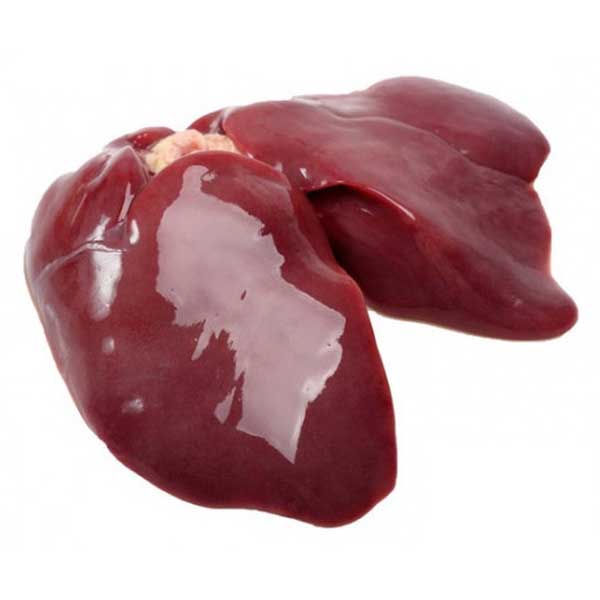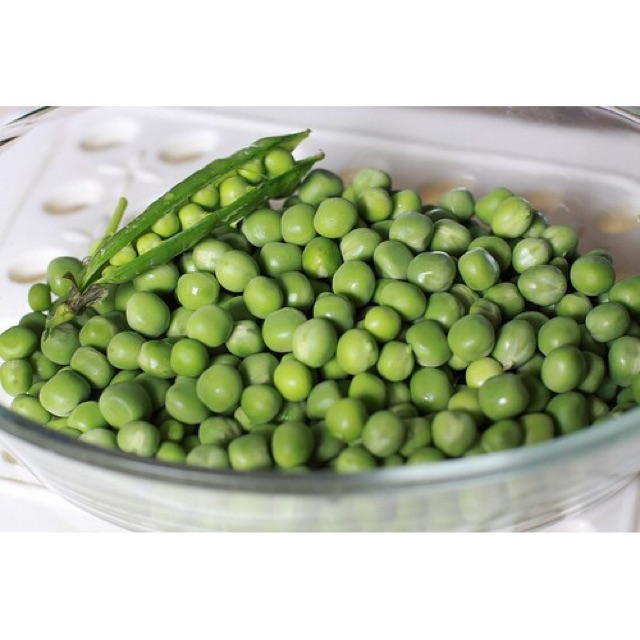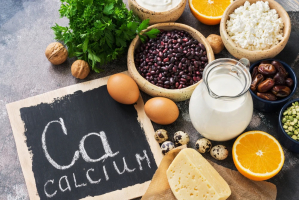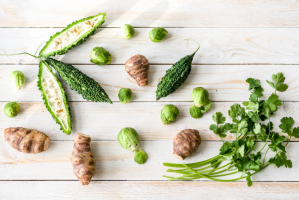Top 10 Best Foods That Are High in Niacin (Vitamin B3)
Vitamin B3, often known as niacin, is an essential vitamin that helps the body metabolize fat, decrease cholesterol, and regulate blood sugar levels. A niacin ... read more...deficit causes pellagra, a disorder characterized by diarrhea, dermatitis, dementia, oral irritation, amnesia, delirium, and, if untreated, death. Even a minor niacin shortage can cause irritation, poor attention, anxiety, weariness, restlessness, apathy, and melancholy. So, let's with Toplist make a list of the Best Foods That Are High in Niacin (Vitamin B3)!
-
Animal liver is one of the few contenders for the title of "superfood". The liver is the largest internal organ in both humans and animals, and it serves a variety of tasks. People used to consume a lot of organ meats like liver, but now they eat a lot less. Despite this, the liver is one of the world's most nutrient-dense foods. The cost of the liver is low, and it is frequently available in stores. The livers of most animals are edible, although the most common sources are cows, chickens, ducks, sheep, and pigs.
Many vitamins, including vitamin B3, are abundant in animal liver. According to scientific data, one serving of cooked beef liver (85g) contains up to 14.7mg of vitamin B3, which is equivalent to 100% of an adult female's needs and 91 percent of an adult male's needs. You can add chicken liver, pig liver, and other livers to your diet to add variety and offer up to 80% of your daily vitamin B3 needs. Chicken liver is also a good source, with each 85g meal supplying 73 percent of the RDA for men and 83 percent of the RDA for women.
The liver is also high in protein, iron, choline, vitamin A, and other B vitamins, making it an extremely nutritious food. However, because the liver contains a lot of fat, those with high cholesterol, blood pressure, and other problems so people should not take supplements on a daily basis.

Pig Liver 
Pig Liver -
The white meat under and around a chicken's breast is known as chicken breast. This cut of beef is typically thick, meaty, and low in fat. Chicken breast is a form of meat that is high in nutrients, easy to find, and prepare in delectable and appealing recipes.
Chicken breast is the section of the chicken that provides the highest vitamin B3 and protein. Up to 11.4 milligrams of vitamin B3 can be found in 85g of cooked boneless chicken breast. Meanwhile, half of the RDA is found in the same amount of boneless, skinless chicken thighs. As a result, one serving provides 71 percent of men's vitamin B3 needs and 81 percent of women's vitamin B3 needs.
Furthermore, chicken breast is high in protein; 100g of chicken breast provides up to 21.02g of protein, which is comparable to 165 kcal. When compared to the typical daily caloric intake to lose weight, this is a very modest figure (for women it is 1,500 calories, for men it is 2,000 calories). Because this meat is low in fat and has no carbohydrates, it is ideal for individuals on a low-calorie diet.

Chicken Breast 
Chicken Breast -
Tuna is a saltwater fish that can be found from the Atlantic Ocean to Indonesia in a variety of settings. Tuna fish is one of the world's most popular seafood species. Tuna, in addition to its abundance and meaty flavor, is quite healthful.
You probably didn't realize you were eating a niacin-rich meal when you had tuna salad or a bowl of tuna. Most people's daily niacin requirements can be met with just one dish of tuna. Niacin is found in 21.9 milligrams per can of tuna. Tuna is not just a good source of vitamin B3, but it's also a good option for vegetarians who don't consume meat. A 165g can of tuna contains 21.9mg of vitamin B3, which is more than 100% of the RDA for both men and women. Protein, vitamin B6, vitamin B12, selenium, and omega-3 fatty acids are all abundant in canned tuna.
Although tuna offers many health benefits, it should not be consumed in excess; roughly 200-300g per week is sufficient, and it should be coupled with a variety of other meals to complete the body's nutritional needs. As a result, while purchasing tuna, it is critical to select fresh and delicious fish and avoid purchasing rotting fish, as rotten fish contain a chemical known as Histidine, which is very toxic and detrimental to one's health.

Tuna 
Tuna -
Salmon is the common name for a variety of fish species belonging to the Salmonidae family. Salmon can be found along the North Atlantic (migratory families Salmo salar) and Pacific (approximately six families of the genus Oncorhynchus) coasts, as well as in North America's Great Lakes. Because of its nutritious benefits, salmon is widely produced in aquaculture in many regions of the world.
Apart from tuna, salmon, particularly wild-caught salmon, is a good source of vitamin B3, fat, and a variety of other minerals. Cooked wild Atlantic salmon fillets (85g) provide 53 percent of the RDA for men and 61 percent of the RDA for women. The same amount of farmed Atlantic salmon, on the other hand, only provided 42% of the RDA for men and 49% of the RDA for women.
Salmon is also high in omega-3 fatty acids, which can help you minimize your risk of heart disease and inflammatory disorders by reducing inflammation. Salmon should be a part of your diet to provide nutrition as well as to prevent cardiovascular disease, autoimmune disorders, and inflammation. When purchasing fresh salmon from the shop, users should be aware of the following procedures for correctly processing fish meat: Filtering fish meat must be done with care and precision, as salmon contains a lot of minute fish meat that, if not removed, will cause injury. When eating, it's easy to induce choking or be dangerous to the users.

Salmon 
Salmon -
The meat of a cow is known as beef (commonly a beef type). It is a prevalent livestock meal around the world, along with pork, and is prepared and utilized in a variety of ways, in a variety of cultures and religions. Beef is one of the most commonly consumed meats, along with pork and chicken.
Beef is a high-nutrition food that contains a variety of necessary amino acids, lipids, minerals, and vitamins. Beef is particularly high in vitamin B3, protein, iron, vitamin B12, selenium, and zinc. Lean meat, on the other hand, contains more vitamin B3 than fat beef. A plate of 95 percent lean beef provides 6.2 milligrams of vitamin B3, but a serving of 70 percent lean beef contains only 4.1 milligrams.
Several studies have found that grass-fed beef has little to no fat, is low in calories, it also provides more heart-healthy omega-3 fatty acids and antioxidants than conventional grain-fed beef. Therefore, grass-fed beef will be more nutritious for you.

Beef 
Beef -
Peanuts, along with chickpeas, soybeans, and lentils, are classed as legumes. The peanut plant is endemic to Brazil or Peru in South America. Peanuts are a good source of protein, fat, and a variety of other nutrients for the body, and they can help lower the risk of heart disease.
Many people assume that peanuts aren't as nutritious as other nuts like almonds, walnuts, and cashews. Peanuts, on the other hand, have many of the same health benefits as other more expensive nuts, thus they can be used as a nutritious diet. Peanuts are one of the best sources of vitamin B3 in the diet. Vitamin B3 is found in roughly 32g of peanut butter, which is about 25% of the RDA for males and 30% of the RDA for women. More than 25% of your daily niacin needs can be met by a handful of raw peanuts or a few tablespoons of peanut butter. Moreover, 3.42 mg of vitamin B3 are found in a 1-ounce serving of peanuts (1 ounce = 28.34 grams).
Protein, monounsaturated fats, vitamin E, vitamin B6, magnesium, phosphorus, and manganese are all abundant in peanuts. For vegans and vegetarians, peanuts and peanut butter are excellent sources of healthful fats and proteins. Despite their high-calorie content, studies show that consuming peanuts on a daily basis can help lower your risk of type 2 diabetes.

Peanuts 
Peanuts -
The avocado is a flowering, dicotyledonous, subtropical tree native to Mexico and Central America. It belongs to the Lauraceae family and is classed as a flowering, dicotyledonous tree. Avocado is a well-known fruit that is incredibly popular due to its delicious taste and numerous health and cosmetic benefits. Avocado is a one-of-a-kind fruit. While most fruits are high in carbohydrates, avocados are high in healthy fats that provide a variety of health benefits.
Avocados are particularly popular on vegan and low-carb diets. One medium avocado has 3.5mg of vitamin B3, which is equal to 21% and 25% of the recommended daily allowance for men and women, respectively. Even if you don't eat an avocado whole, 1/2 of one delivers more than 10% of your daily requirements. Avocados also include a lot of fiber, good fats, vitamins, and minerals.
Avocados are rich in potassium, a nutrient that most people don't get enough of. In fact, one avocado has twice the amount of potassium as a banana. Avocados are also high in monounsaturated fats, which can help lower your risk of heart disease if you eat them on a regular basis.

Avocado 
Avocado -
Peas are round peas from the genus Peas that are commonly eaten as a vegetable. It is an annual plant that is grown seasonally in many regions of the world in cool climates. The weight of each bean varies between 0.1 and 0.36 grams.
Peas are one of the dietary sources available to you. With 3mg of vitamin B3 in 145g of peas, this is a highly absorbable vegetarian form of vitamin B3 (about 20 percent of the RDA for both men and women). Add a dish of chickpeas to your plate when you want to make a niacin-rich dinner. In half a cup of cooked peas, there is 1.18 mg of vitamin B3. Peas are very high in fiber, with 7.4 grams per 145 grams of beans. A cup of peas supplies more than 25% of a person's daily fiber intake if they consume 2,000 calories. Peas provide a surprising amount of vegetable protein, at 4.1 grams per half-cup. They are also full of other nutrients such as potassium, iron, zinc, magnesium...
Peas are also high in antioxidants and other substances that have been shown in studies to lessen the risk of cancer and lower cholesterol levels. This legume also aids in the formation of beneficial intestinal bacteria. Peas are incredibly convenient to utilize because they can be canned or frozen.

Peas 
Peas -
Potatoes belong to the Solanaceae family. Potatoes are short-term agricultural crops grown for their starchy tubers. They are the world's most widely grown root crop and the fourth most popular crop in terms of the fresh yield – behind rice, wheat, and maize. After centuries of selection and breeding, there are now more than a thousand different varieties of potatoes. More than 99% of the potato species grown globally today are derived from various varieties in the lowlands of south-central Chile.
Potatoes are also high in vitamin B3. One potato is estimated to give 4.2mg of vitamin B3, which is equal to 25% of the RDA for males and 30% of the RDA for women. Brown potatoes (caramelized white potatoes) had the largest quantity of vitamin B3 of all potatoes, according to one study (with 2mg of the vitamin per 100g of potatoes).
When preparing foods high in vitamin B3, keep in mind that you should not soak them in water for too long. Because niacin is water-soluble, it causes food to lose a considerable amount of this important vitamin. Potatoes that have sprouted also contain a lot of poisons. When you notice that the potato has sprouted, toss it out; it is not fit to eat. The toxicity of sprouting potatoes harms the human body, causing headaches, diarrhea, cramps, and, more gravely, causing people to become unconscious and die.

Potatoes 
Potatoes -
The sweet potato is an agricultural plant with large, starchy, sweet-tasting roots that is a major source of root vegetables, both as veggies and as food. Young leaves and stems can also be eaten as a vegetable. The sweet potato is distantly linked to the South American potato and even more distantly connected to the African and Asian yams.
Sweet potatoes are high in plant-based vitamin B3, as well as vitamin A, C, potassium, and a variety of other vitamins. They're simple to absorb. Sweet potatoes are easy to integrate into your diet because they are so tasty. Sweet potatoes go well with meals high in vitamin B3, such as lean chicken and avocado. Vitamin B3 is present in 2.22 milligrams per medium cooked sweet potato. Sweet potatoes can be used to supplement vitamin B3 in a variety of ways because they are easy to eat and combine in meals.
Sweet potatoes are high in vitamins, minerals, riboflavin, thiamine, niacin, and carotenoids, among other nutrients. Sweet potatoes can help you avoid and treat numerous chronic diseases, lose weight, and improve your skin and hair because of these nutritional components. When purchasing sweet potatoes, pay close attention to the skin. Choose tubers that feel firm in your palm, have a uniform color on the outside, and have no cracks, scratches, holes, or symptoms of deterioration.

The sweet potato 
The sweet potato































